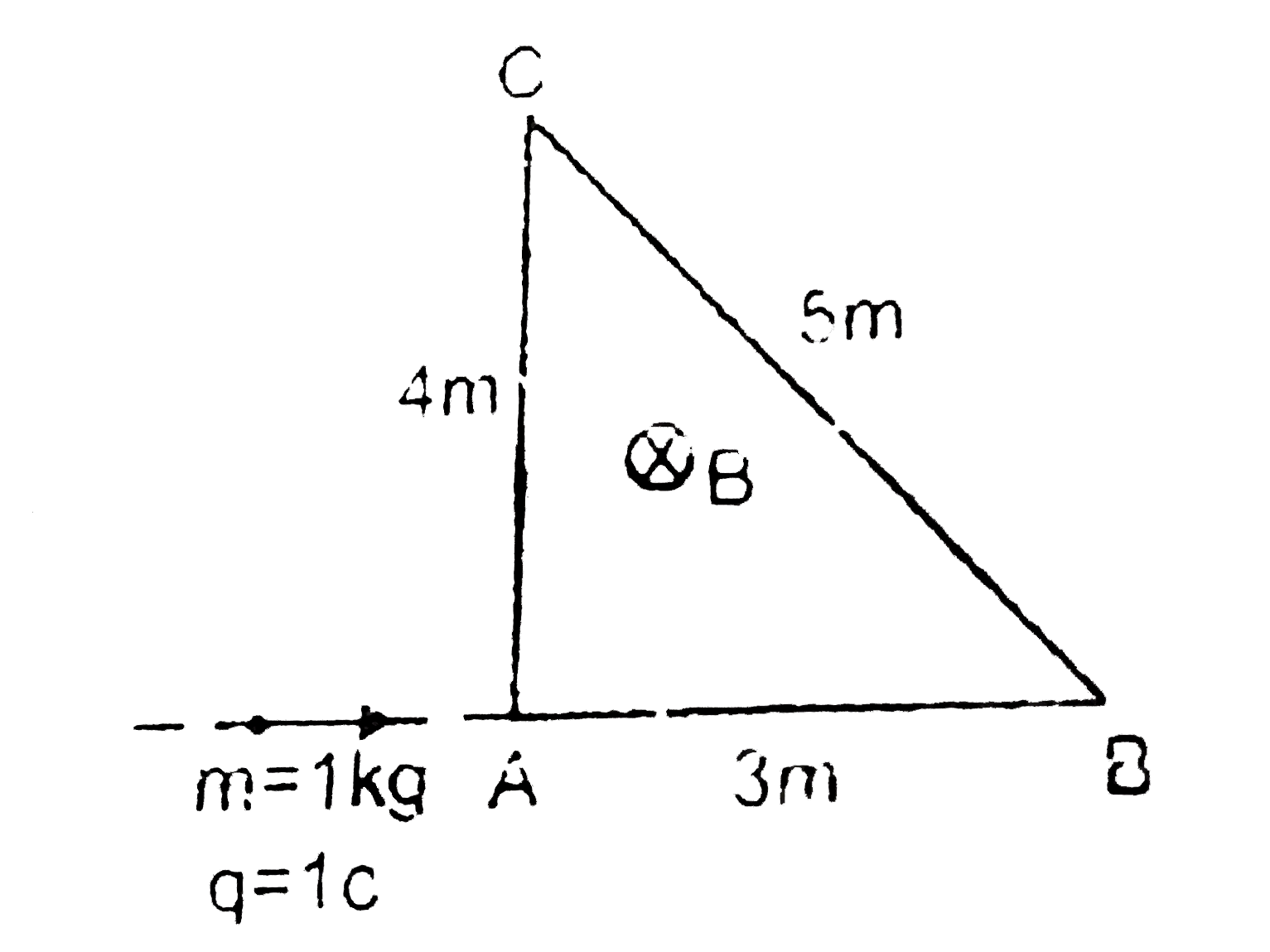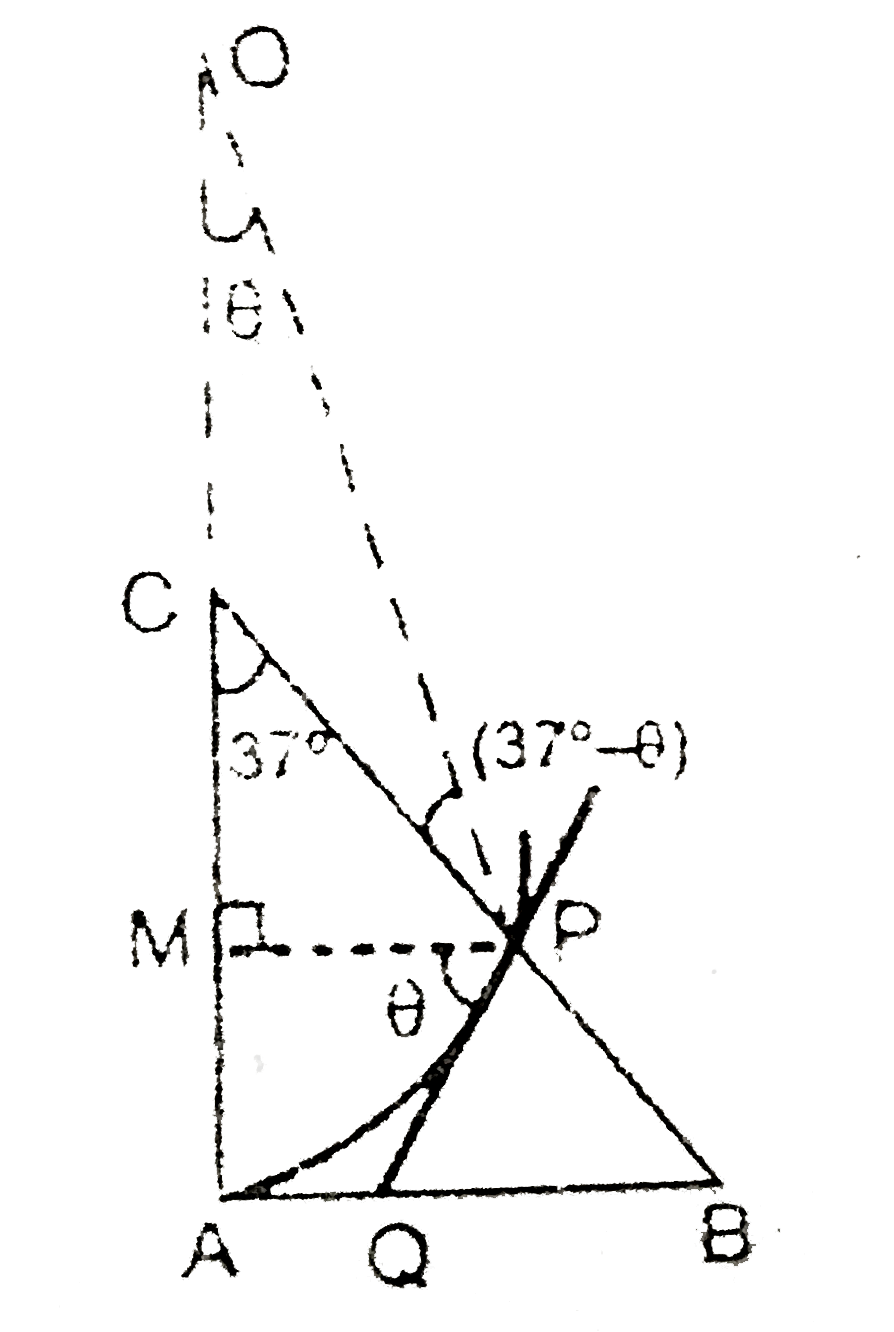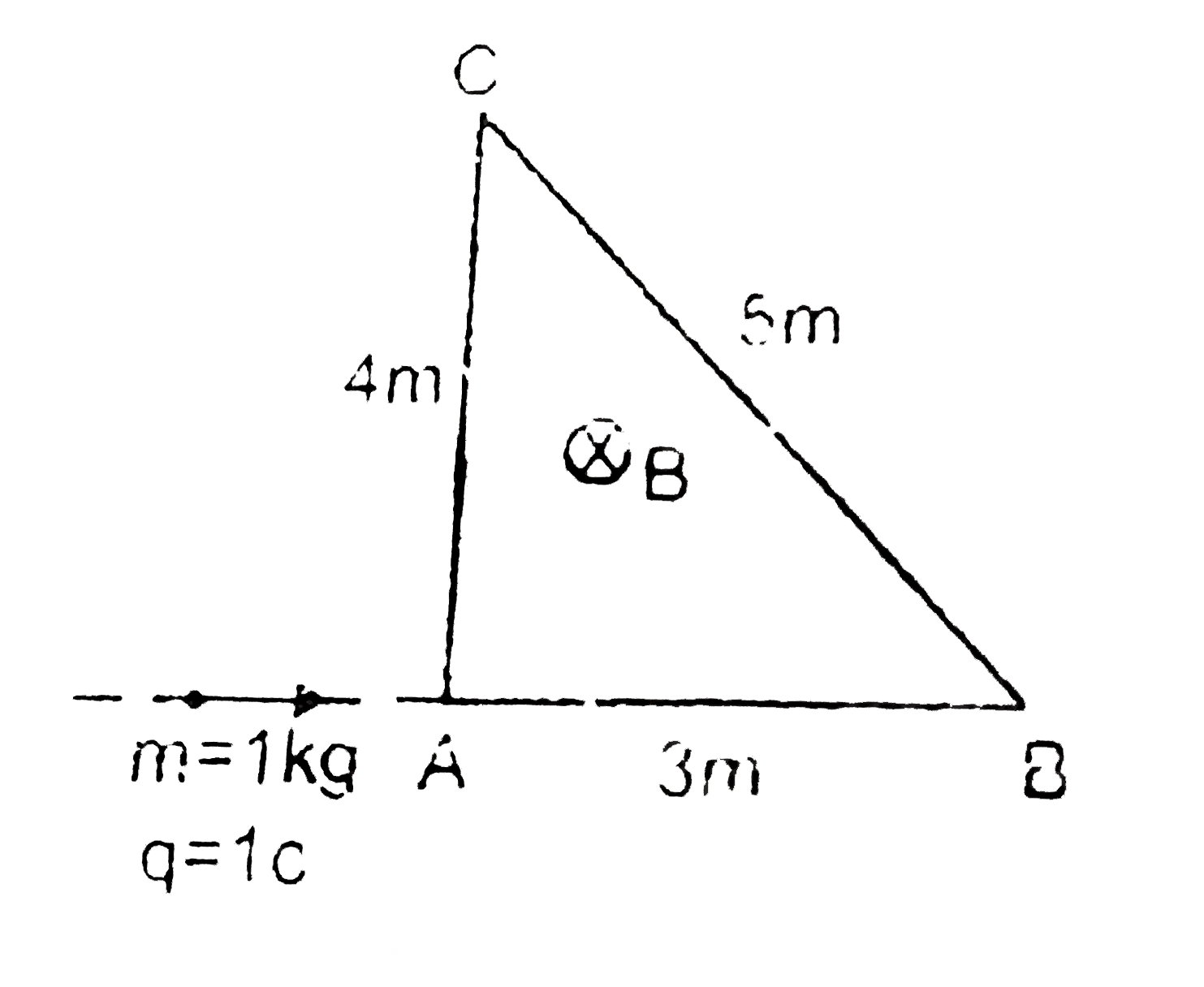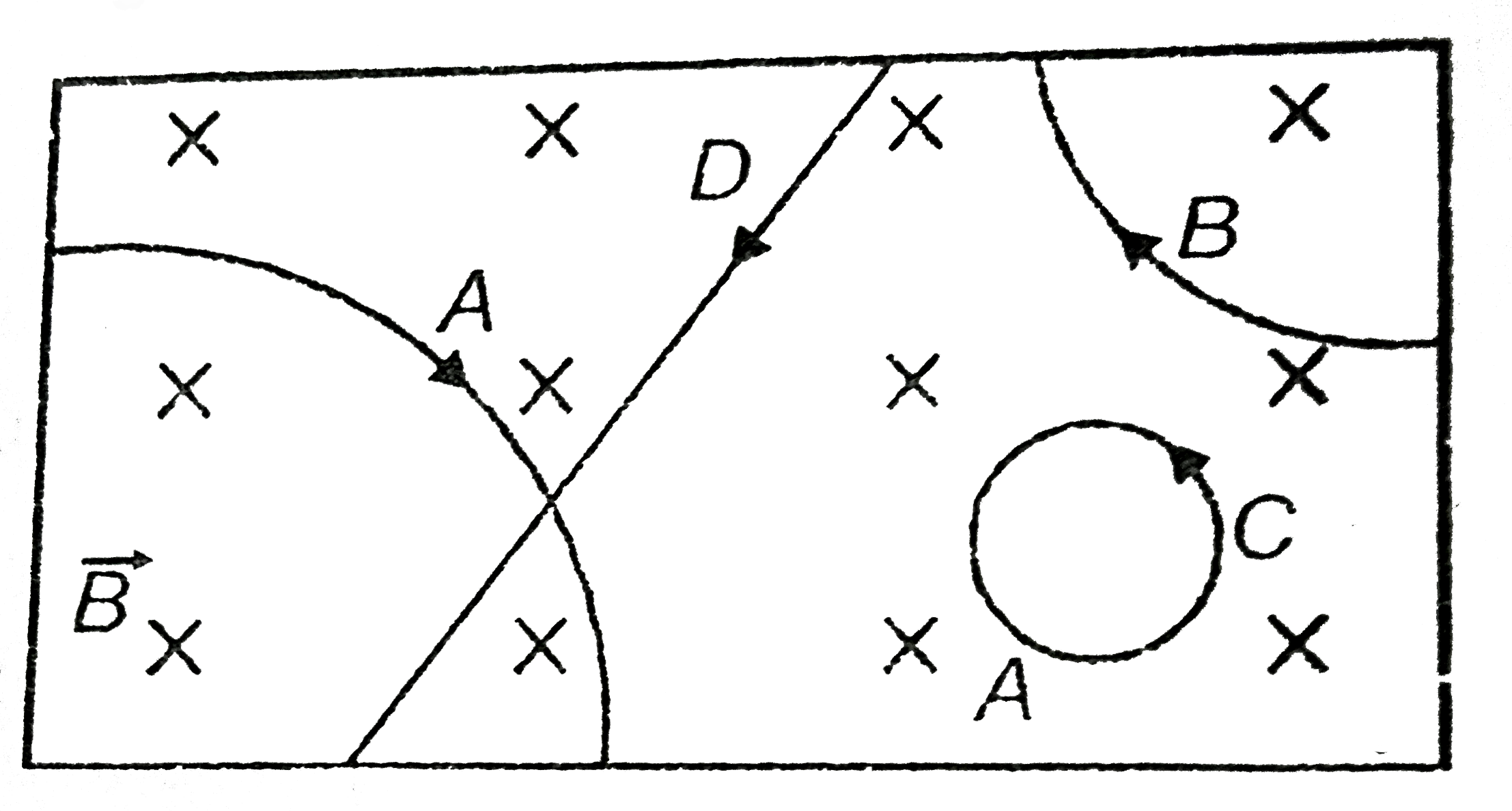A small particle of mass m = 1 kg and charge of 1C enters perpendicularly in a triangular region of uniform magnetic field of strength 2T as shown in figure :

In previous question, if particle enter perpendicularly with velocity 48 m/s in magnetic region. Then, how much time will it spend in magnetic region :
a. 11π360sec
b. 7π360sec
c. 13π360sec
d. 17π360sec
The correct Answer is:B

R=muqB=24m Let, ∠MPQ=θ
By geometry, ∠CPO=(37−θ)
In ΔCPOOCsin(∠CPO)=OPsin(∠PCO)
20sin(37∘−θ)=24sin(180∘−37∘)
5sin(37∘−θ)=5×63
sin(37∘−θ)=12⇒θ=7π180rad
ω=qBm⇒ω=2rad/sec
t=7π360sec
Topper's Solved these Questions
- DAILY PRACTICE PROBLEMBOOK - RESONANCE ENGLISHCHAPTER - DAILY PRACTICE PROBLEMEXERCISE - DPP No.56
20 Videos
- DAILY PRACTICE PROBLEMBOOK - RESONANCE ENGLISHCHAPTER - DAILY PRACTICE PROBLEMEXERCISE - DPP No.57
9 Videos
- DAILY PRACTICE PROBLEMBOOK - RESONANCE ENGLISHCHAPTER - DAILY PRACTICE PROBLEMEXERCISE - DPP No.54
9 Videos
- CURRENT ELECTRICITYBOOK - RESONANCE ENGLISHCHAPTER - CURRENT ELECTRICITYEXERCISE - High Level Problems (HIP)
19 Videos
- ELECTRO MAGNETIC WAVESBOOK - RESONANCE ENGLISHCHAPTER - ELECTRO MAGNETIC WAVESEXERCISE - Exercise 3
27 Videos
Similar Questions
A small particle of mass m = 1 kg and charge of 1C enters perpendicularly in a triangular region of uniform magnetic field of strength 2T as shown in figure :

In the previous question find the change in angular momentum of particle w.r.t centre of its circular path during its motion in magnetic field :
View SolutionA small particle of mass m = 1 kg and charge of 1C enters perpendicularly in a triangular region of uniform magnetic field of strength 2T as shown in figure :

Calculate maximum velocity of the particle with which it should enter so that it complete a half-circle in magnetic region :
View Solution
Knowledge Check
A small particle of mass m = 1 kg and charge of 1C enters perpendicularly in a triangular region of uniform magnetic field of strength 2T as shown in figure :

In the previous question find the change in angular momentum of particle w.r.t centre of its circular path during its motion in magnetic field :A1152kg.m2/sB576kg.m2/sC2304kg.m2/sDzeroA small particle of mass m = 1 kg and charge of 1C enters perpendicularly in a triangular region of uniform magnetic field of strength 2T as shown in figure :

Calculate maximum velocity of the particle with which it should enter so that it complete a half-circle in magnetic region :A2 m/sB2.5 m/sC3 m/sD4 m/sA particle of mass m carrying charge q is accelerated by a potential difference V. It enters perpendicularly in a region of uniform magnetic field B and executes circular arc of radius R, then qm equals
A2VB2R2BV2BRCVB2RDmVBR
A small particle of mass m = 1 kg and charge of 1C enters perpendicularly in a triangular region of uniform magnetic field of strength 2T as shown in figure :

Calculate maximum velocity of the particle with which it should enter so that it complete a half-circle in magnetic region :
View SolutionA charge particle of mass m and charge q enters in a region of uniform magnetic field as shown in figure.The magnitude of change in linear momentum due to magnetic field will be

View SolutionFour particles enter a region of uniform magnetic field. Their trajectories are shown in figure. What are the signs of the charge of all four particles ?

View SolutionFour particles enter a region of uniform magnetic field. Their trajectories are shown in figure. What are the signs of the charge of all four particles ?

View SolutionA particle of mass m carrying charge q is accelerated by a potential difference V. It enters perpendicularly in a region of uniform magnetic field B and executes circular arc of radius R, then qm equals
View Solution
